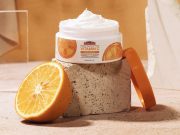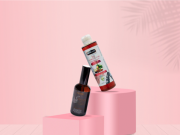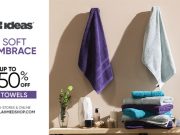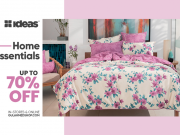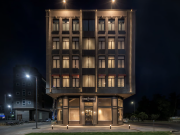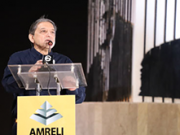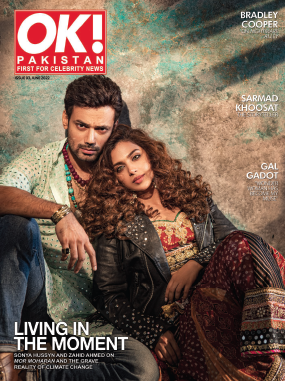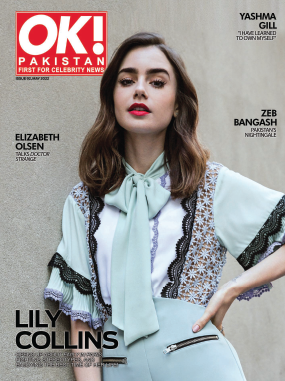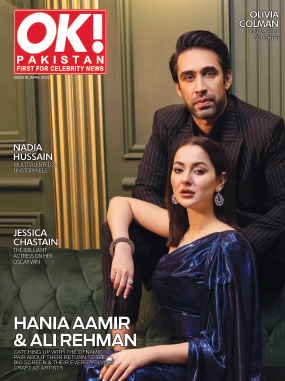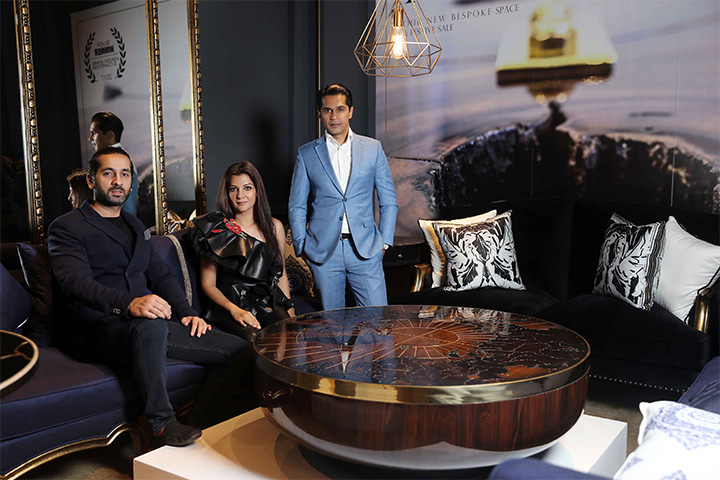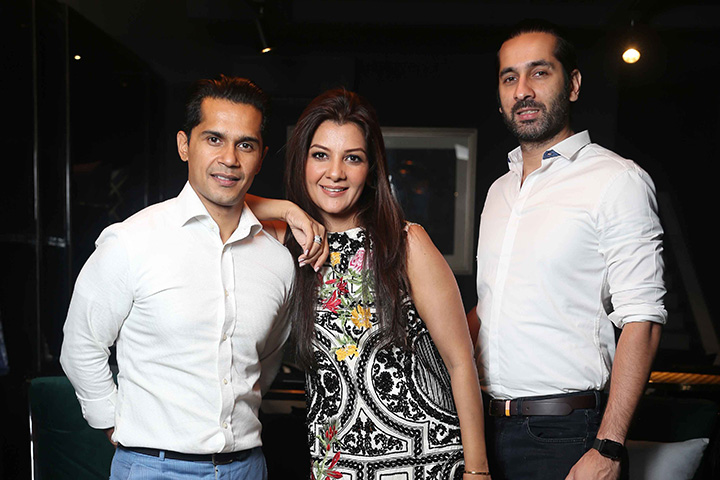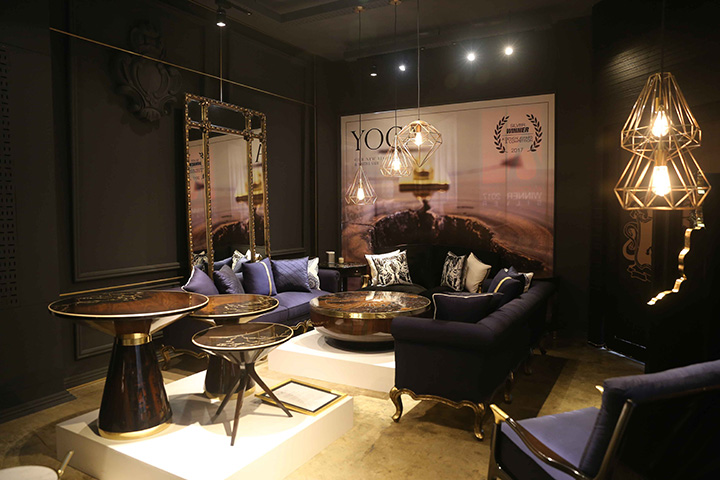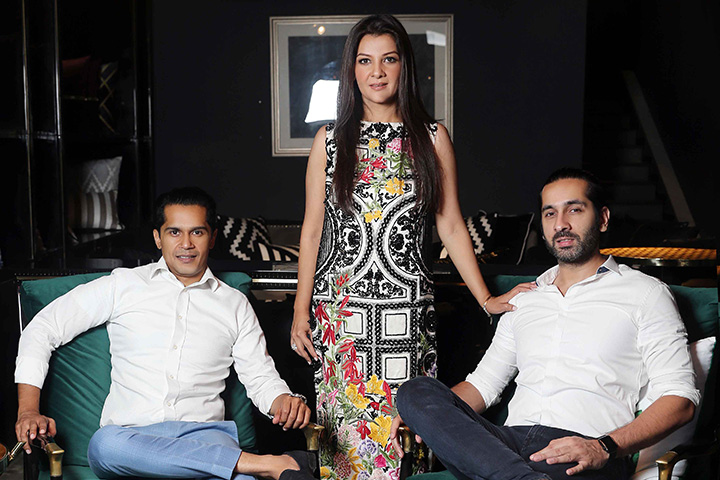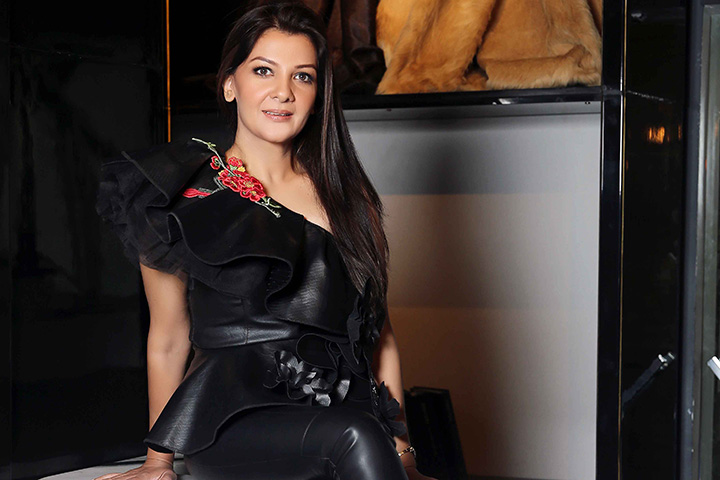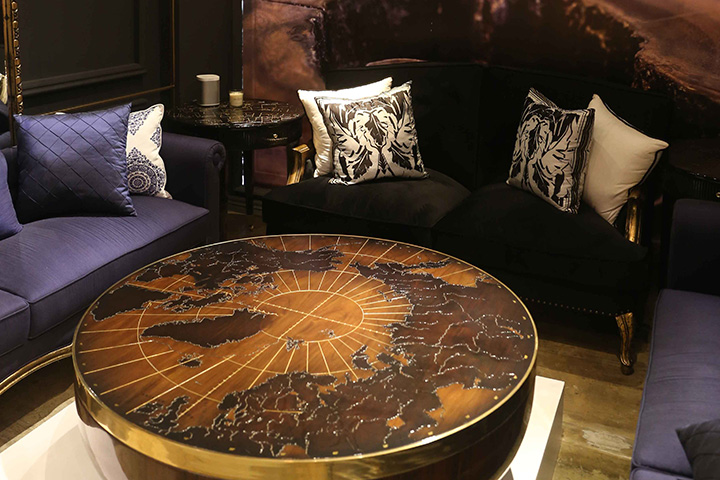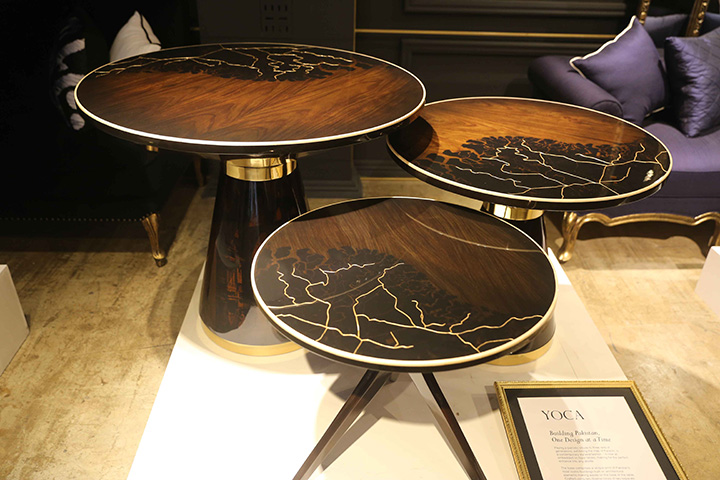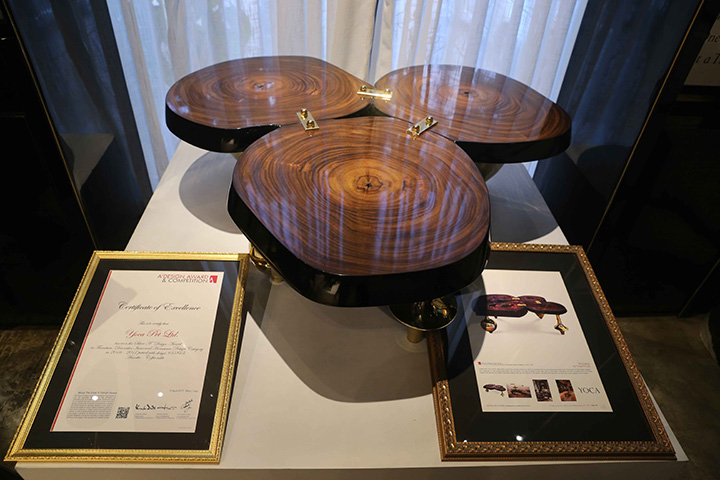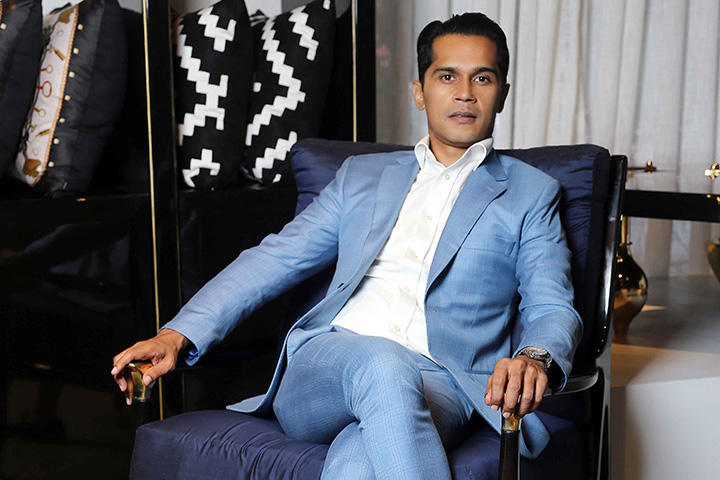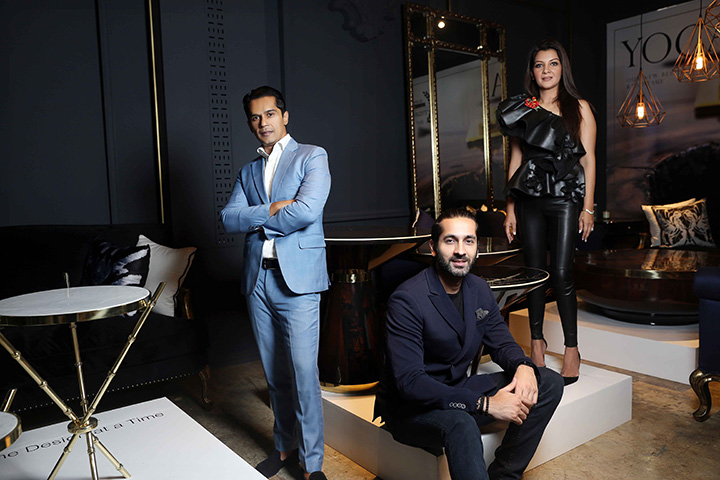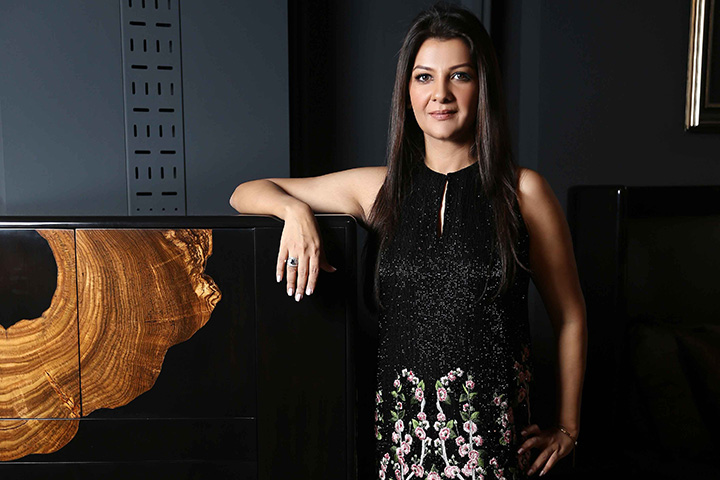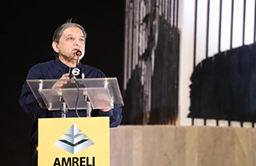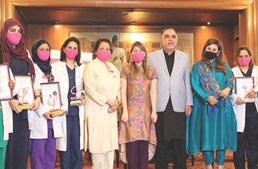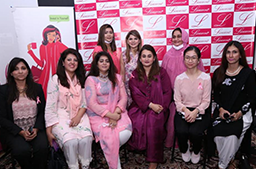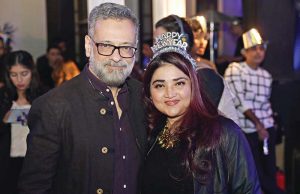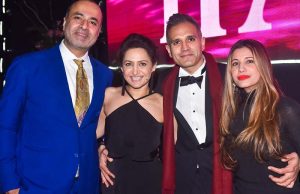“It’s the Dialogue of Design that carries things forward. When we put the big ‘isms’, they become restrictive. For me as a designer I don’t limit myself.”
-Sarah Najmi Bilgrami
YOCA shares the story of creating award-winning designs and sustaining a patent artistic philosophy.
The YOCA team comes home to design, be it a collaborative studio, their personal spaces or their architectural projects. The magic, however, is the fact that they bring you home as well. The team behind bespoke Home Couture, Sarah and Zaid Bilgrami and Ahsan Najmi have developed a system that creates sustainable spatial experiences while staying firmly grounded in the context. They don’t stop, however. The energy is electric within the YOCA studio which is geared towards a collaborative practice, bringing a patent design philosophy, craftsmanship and a constant research and development process on the table. It is allowed to be a dreamer, they remind you to find meaning in the discarded, to trust the process of creation and let the organic forms bloom into rosewood tables, for example. With ‘The Amoeba’, they dared to cut against the grain, allowed the mistakes to remain in the canvas, then structured the piece as a functioning coffee table. This energy of unlabelling themselves makes the simple just that, a beautiful space that they carry with them. It’s only love and it glows with each piece that is produced.
The Amoeba brings an elemental sense of poetry on the table. How was the project conceived?
Sarah Najmi Bilgrami: The reason why it emanates poetry is because of the simplicity of the idea that inspired us. The wastage that was lying around in the factory, that caught our eye. It was the trunk, which is closest to the root which is usually discarded. However the process of cutting and layering it revealed a story that was almost sweet. It was the piecing together of the parts of wasted wood that became the inspiration for Amoeba.
Zayd Bilgrami: It’s called ‘The Amoeba’ because of the way it was put together. The root of the tree was used. It was cut against the grain which resulted in a texture that was very interesting. As the pieces were cut and layered, it almost became a jigsaw puzzle which was then put together as modules.
Ahsan Najmi: ‘The Amoeba’ reflects YOCA’s design philosophy. It brings the inspiration process on the table; how the team works with materials, craftsmen and each other, is all part of the layers that eventually became an award-winning piece.
How did the concept evolve within the team, given each of your own artistic processes?
SB: Once the wood was worked, the legs of the table were put together. It is six different designs, each used an idea that was developed by the team. A latoo, a minaret and several other designs we had worked with. They all sort of converged into the evolution process as the piece shaped up. We work in synergy with each other so the table developed as the materials used were worked upon.
ZB: For me, the underlying story behind each piece is important, at the same time using a vernacular design language is important. The craft is as imperative as the design. Working with the team at the studio and at the factory adds value to each product. ‘Amoeba’ managed to find its ground because of the craftsmanship of using pure contextual materials.
The piece is sculptural in its form, yet it maintains a very strong sense of functionality. How was the design balance achieved, given the challenges of working with a delicate idea and achieving the holy grail of design?
ZB: As architects we are trained to maintain the sustainability of any piece we work with. That is part of our training. It’s basic, form follows function and every problem that we are faced with, we tackle all of its dimensions. The functionality, the sustainability as well as the aesthetic. Taking that forward, each product will always have an underlying story which is what brings its uniqueness. The material for the legs and the clamps is part of the design. We work with brass, the table has six different legs that are worked upon with different kinds of polishes. A bespoke product can only be made if the craft is carefully nourished. Brass is a versatile material yet it never loses its innate beauty, the etching and the tonality results in a patent beauty. It’s not easy to work with, however, especially since the craftsmanship was nearly extinct. The revival of this material and using it in our products has revived a craft that allows us to use a material that works with the design.
“I wish the people who can make a difference, would value what art and design can do.”
– Sarah Najmi Bilgrami
AN: The research involved an exploration of the geometry of the legs. Different modules were made to explore strength, stability, balance and symmetry of table. Also research was done to determine the placement of the legs. Because the bark is natural, each module has a slight modification for the placement of the legs. Each of the three segments are held together by brass rivets, and sit on varying hand crafted brass legs.
Has anyone had coffee on the table yet?
ZB: Yes! In fact the modulural structure of the table allowed us to create varied pieces.
YOCA has a unique philosophy, what are the challenges of working as a collaborative design studio?
SB: ‘Let’s talk’, that is how YOCA defines itself. It’s both a challenge and it is what makes the entire process from the brainstorming sessions to the final products in the showroom a labor of love. We grew up in such an enriching environment, where the art and culture conversations were regular fixtures. It was beautiful and obviously the impact of what it made us manifested in restrospect. The collaborative now is an expression of what we aim to give forward. We decided to talk to people, to take down barriers of ‘isms’ and start design dialogues. It really is the dialogue of design that carries things forward. The fact that there are people who are able to make a difference, great people who need to be valued and talked to. Conversations are important, it’s really as simple as that. The most important part, however, is that we have each other. A sense of camaraderie that has become vital to our design process is a decade long synergy that produced work that we loved, and that is what the studio aims to work with on a level where labels are removed and conversations flow in. Art is slightly more perceptive, there are no lives at stake but even there I find that we take ourselves so seriously. Sit down and have a cup of tea. But the labels of who is supposed to do what, where, when becomes so restrictive, it’s a challenge to work around them.
ZB: Taking in what we are trained in and adding the creative twist resulted in YOCA. The studio is where we come home to and the camaraderie of the three of us combined with a younger lot now is the kind of space that allows for fresh ideas to emerge and that’s the beauty of it when we all sit together and brainstorm on ideas and watch them materialise as bespoke pieces.
AN: That’s where YOCA distinguishes itself , we are professionally trained architects and we have training in product design. We have a very large r and d.our focus is on experimentation, be it how to use to the products, the polishing techniques, how to combine the techiques, be it the use of brass, the high gloss polishing – these are all the things that we have been playing with for a decade. And the series of products you see now is another exploration of how we are taking things further, how we are using distressed woods, different methods and really that is the focus. We put a lot of heart and soul into the design, and we enjoy what we do.
“Our focus is on experimentation, with a very extensive research and development process. This is how YOCA distinguishes itself.”
– Zayd Bilgrami
Do you feel the defined labels within art and design are outdated? Or is it categorical, especially for a successful entrepreneurial venture?
SB: Architecture, I would say, is of a different caliber. It is, and will always remain a public safety profession. I do not condone people who have just graduated and say they can build. It is a public safety profession and it has to be respected as such. It has to be treated right. You can’t hire a contractor and start building walls. There is too much liability and risk and no where in the world is it legal where you can do that and get away with it. It’s a profession where you can’t practice without a liscence and the reason why we are so respectful of the profession is because we have a legacy where our fathers have worked in ways that made us respect the rigorous process. There is a reason for that discipline that nearly breaks you. There are so many people who come out and say I have made this room but have they studied the structure, the material? For me, the discipline that the profession requires is critical. Having said that, as artists we can’t limit ourselves. Some of the finest works of art and design are made by architects. That however does not come with a label, if you can make a building you can design a shoe, for example and the sensibility will remain as solid as the building.The entire design and sensibility of style becomes your person, it’s a natural extension of who you become because you function as a designer.
How is the design process of the firm sustained on a daily basis?
AN: We carry a legacy of design along with our training as architects, product designers and fine artists which could have been overwhelming but the discipline of training ourselves made us work in sync with each other. The daily meetings, client dealings will be divided but with a decade of experience now, we know how to cultivate a studio environment. We enjoy working with our teams and our teams enjoy working with us. The most important thing is that there are no territorial ego battles. The space is geared towards healthy design critique and development. When we convene as designers and critique, it’s meant to be an enriching process based on a design philosophy that aims to better the idea, the process and the product. The dialogue is presented as a counter proposal to try and test each idea. It then allows for mistakes that lead to growth.
What is the selection criteria of the projects given that each piece and spaces designed manage to look like a labor of love?
SB: It has always been a curated process. Anyone who comes to us has to have some research done since we deliver spaces that we would imagine being comfortable in. This way the relationship of working with someone on their space is removed from the client vs. designer friction. It’s more of a dialogue and we work on projects where we know the people are going to understand the language and trust us with their spaces.
ZB: Each project is selected meticulously but obviously it is modified to suit the needs of the space. The usage of material for example will be modified if it is a large office space as opposed to a residential design project.
“Taking the vernacular and reinventing that; taking parts that have been discarded, that are forgotten and it’s put forward as a high end bespoke furniture piece.”
– Zayd Bilgrami
What is the take away for the team as a whole from the award, how does it add to each of your artistic expression?
SB: The award was something we were not even thinking about. They contacted us and persisted for the table to be submitted. It was obviously a pleasant surprise but the fact that the committee wanted to evaluate our educational, professional and design backgrounds was the impetus for the table to be submitted. I am someone who believes in the process being evaluated, and then winning a highly prestigious award amongst 140 entries from across the world, validated the YOCA philosophy on a global platform.
ZB: ‘The Amoeba’ was not geared towards an award. It obviously adds a lot of prestige and a sense of accomplishment to be recognised for the product that became an award-winning piece. However, for us the process, finding a story, reviving a craft that was near extinction and the design dialogues that resulted in an expression that is larger than a single table was really the winning streak.
AN: The fact that an award-winning product resulted from the dynamics of our working relationship, the research and development that has been the cornerstone of our design process, pushed the YOCA philosophy. We have a decade long process of learning, the mistakes that were made in the process and it is a reminder that working towards what we love, we enjoy will result in products that are sustainable as Home Couture but really it is a milestone in our evolutionary process.
How does the space you live in work as a design and as your home?
SB: There really is no distinction for me. I suppose the distinctive part is when I get to dress my children and I am very particular about that but otherwise I function as a designer so I may have an idea in the middle of the night and it will suddenly be a space to discuss design.
ZB: It is designed to function for us and our children, but it becomes organic in so many ways. However, there are pockets that are meant for work but since it’s a fluid space it sort of merges into our roles as parents and artists.
Rapid fire Sara, Zayd & Ahsan
What is your design mantra?
Sara Bilgrami: Design dialogues.
Zayd Bilgrami: Less is more.
Ahsan Najmi: Sophistication in design.
Favourite space?
SB: There are so many, any well designed space.
ZB: Less is more.
AN: Love being in urban centres.
How haute should Home Couture be?
SB: As haute as you want it to be. If you can carry it with confidence, you own the couture.
ZB: You can’t generalise home couture. However for YOCA, we enjoy designing exclusive, luxury bespoke high end pieces focusing on quality, design and perfection.
AN: It’s not about the distinctions for me. Interiors are layered and each space requires its own unique balance.
Personal style philosophy?
SB: It’s solid, monochrome but with a flair. Again, it’s about what I am most confident in.
ZB: Clean, articulate and structured.
AN: Clean and simple with the right amount of detailing.
Favourite design items at home?
SB: Any piece that is designed well, my home is filled with them.
ZB: My study desk, built by YOCA!
Design retreat?
SB: Italy right now.
ZB: Milan / Paris.
AN: Design detailing in Italy is definitely the eye candy one needs.
Retreat from Design?
SB: None. I don’t think it’s separate from who I am.
ZB: I enjoy looking at random start-up business ideas. Especially tech-oriented.
AN: White sand and blue water, of course!
Favourite travel destination?
SB: Italy.
ZB: Maldives.
AN: Europe.
Motivational life mantra?
SB: For me as a designer I don’t limit myself. To keep on growing.
ZB: Perfection lies in details. Keep striving to push harder each day!
AN: Never give up!
YOCA five years later?
SB: More of what we are now.
ZB: A globally recognised and placed brand
AN: International brand recognised for design excellence.
![]()
INTERVIEW: AMNA IQBAL
PHOTOGRAPHS: KASHIF RAFIQ
COORDINATION & STYLING: ALIZEH PASHA












